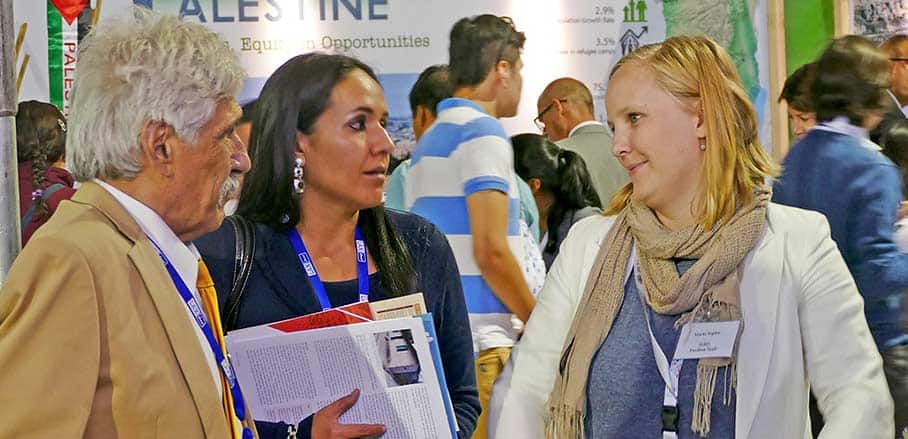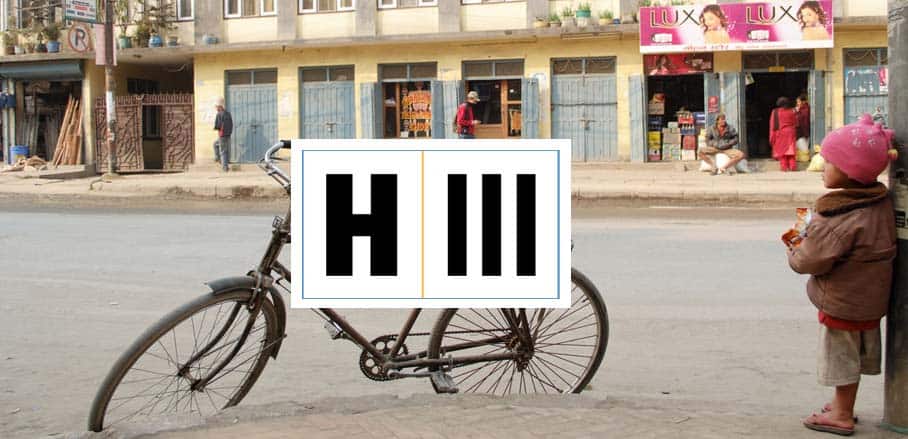Live from Quito, Day 3: Partnerships, Smart Cities, and urban-rural linkages
As yesterday and the day before, it was crowded today at Habitat III. Delegates, official conference participants, but also citizens from Quito and all over Ecuador were pouring into the exhibition ground. The UN conference seems to be having an impact on the lives of Quito’s inhabitants. This is great news since the New Urban Agenda needs to be implemented on the local level, and citizens will need to know about its benefit for their everyday life.
In Quito, citizens are eager to learn about ideas and projects showcased at the exhibition. Many are attracted by the German Pavilion’s magnetizing effect and stop to have a closer look at its exceptional construction. Drawn into the buzz, the visitors stay for the various events that take place in the panel area, taking in the message that sustainable urban change can only be achieved by inter-municipal cooperation and by actively involving the citizens.

German Pavilion at Habitat III © GIZ
Partnerships are key for implementing the New Urban Agenda
“We need partnerships on every level. We do not only need a municipal forum, but we need city-to-city partnerships to develop our communities. Partnerships bring us the global perspective,” said Sara Nandudu from Slum Dwellers International at the “Follow-up and Review of the New Urban Agenda” event on Wednesday morning. Networks are one means to mobilise a wide range of local actors, she elaborated. Together with national and international partnerships, they provide opportunities for mutual learning.
These opportunities are particularly crucial to communities that do not have a culture of decentralised administration and citizen participation. In Ukraine, for example, GIZ is currently implementing a programme on integrated urban development on behalf of the German Ministry for Economic Development and Cooperation. Introducing local self-government is not only a key reform in the country’s democratisation process as it strives towards European integration. Strong local governments and citizens’ participation are also at the heart of the 2030 Agenda for Sustainable Development and, of course, the New Urban Agenda. In the Ukrainian city of Poltava, GIZ has just begun to facilitate policy dialogues that actively engage the citizens. More than 50 proposals on urban development strategies were already submitted during last month’s initial workshop.
What Smart Cities can do for sustainable development
Following the discussion about Ukraine, “Smart Cities” were debated as a means to foster integrated and sustainable development in urban areas. Smart Cities are cities that make use of information and communication technologies (ICT). But “a digital city can only be smart if everyone can participate,” said Gunther Adler, State Secretary of the German Federal Ministry for the Environment, Nature Conservation, Building and Nuclear Safety, in his opening remarks.
Manuel Fernando Velarde Dellepiane, Mayor of the San Isidro district in Lima, Peru, agreed that smart cities have to be inclusive but also stressed that citizens must first be educated to really understand the benefits of a smart and sustainable city. San Isidro is the business and commercial heart of Lima. More than a million people flow in and out of the district each day. The side effects of heavy traffic, congested streets, and public space being taken over by incorrectly parked cars generate pollution, risks to public health, and a loss of quality of life. By using digital technology, Mayor Dellepiane has started to launch a sustainable mobility strategy that focuses on public transport and green and open public spaces.

Discussions at the German Pavilion at Habitat III © GIZ
Going beyond: Urban-rural linkages
Mayor Dellepiane is only planning within his district. The panel discussion “Strengthening Urban-Rural Linkages through Integrated Territorial Development” focused on the fact that urbanisation usually transcends administrative boundaries. Though cities have borders, their environmental impact does not stop there: cities’ use of resources and contribution to pollution, for instance, affects their outskirts and the areas beyond them. Also, cities tend to spread to their surroundings. On the other hand, rural areas extend into the city: people commute to work or travel to urban centres to go shopping, and goods are shipped from the countryside to the city.
This urban-rural linkage needs to be planned and managed in order to contribute to sustainable urban development that offers social, economic and environmental opportunities for all, urban, peri-urban and rural inhabitants alike. If that is not the case, rural surroundings and cities would end up competing with each other, thus hindering development.
During the panel discussion, representatives from national and local governments, communities and professional organisations, as well as development agencies, shared concrete experiences of how to implement integrated territorial development (ITD) strategies and overcome the urban-rural dichotomy. Amongst the many different approaches and projects presented, one fact was made univocally clear: integrated territorial development needs a top-level political framework because in terms of administration as urban areas are usually fragmented into different political and administrative levels. Without an overarching framework, cooperation will not succeed.
